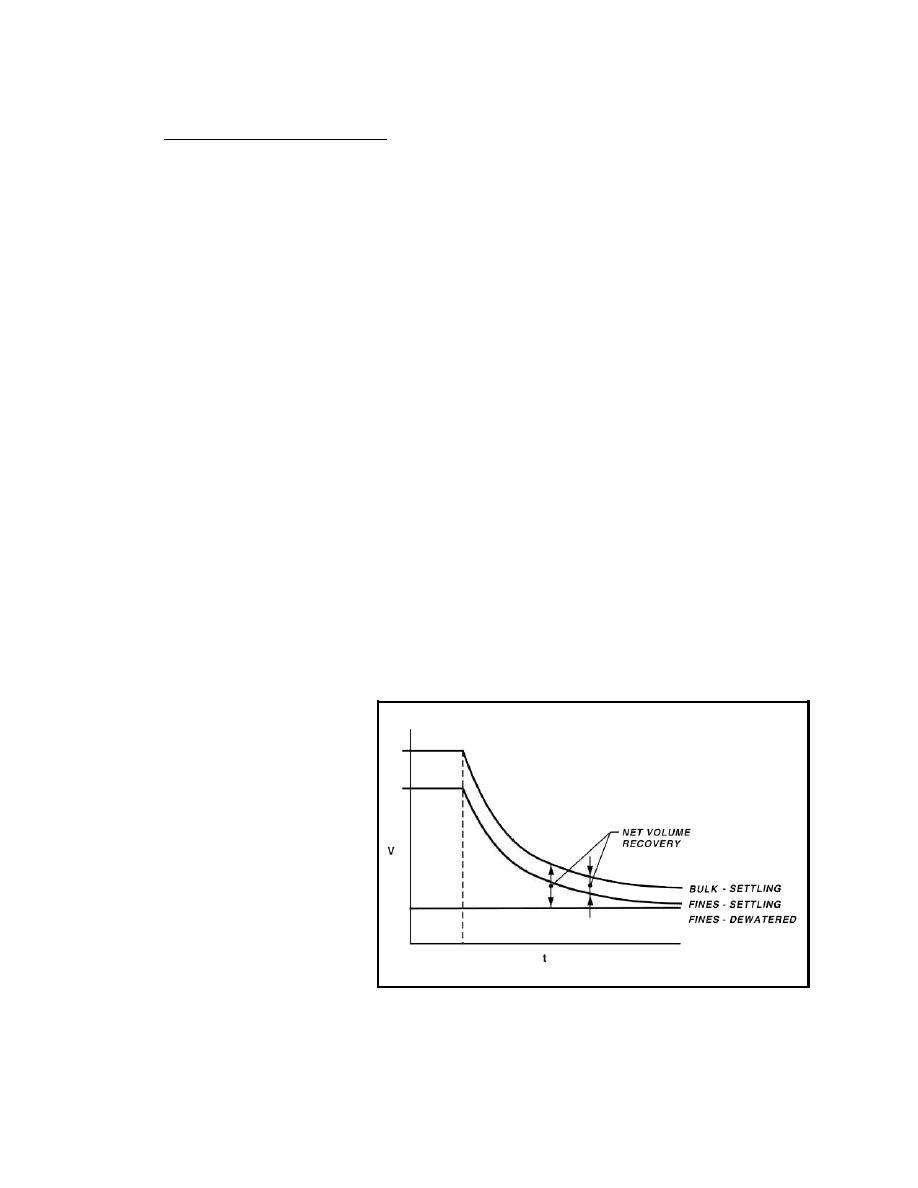 |
||
|
|
||
|
Page Title:
Figure 8. Relative disposal volumes as a function of time for bulk and separated, hydraulically placed material, and separate... |
||
| |||||||||||||||
|
|
 ERDC TN-DOER-C27
July 2002
(1 + w f )[(1 - xm )MS
]
+ MFi ρti
(10)
b=
i
(1 + wi )(MSi + M Fi )ρt f
where
wi and wf = water content, as a decimal
MSi = mass sand, in situ or initial
M Fi = mass fines, in situ or initial
ρti = total or wet density, in situ or initial
ρt f = total or wet density, final
An estimate of the disposal volume following processing can therefore be obtained based on the
hydrographic survey and projected dredging depths VTi , and the bulking factor derived by
measuring the initial and final water content, sand and fine mass, and wet density of representative
samples, thus:
VTf = b VTi
(11)
The net volume recovery is then
∆V = VTi - VTf
(12)
Conceptually, it is valuable to con-
sider potential volume reduction in
the context of the processes being
utilized. Depending upon the proc-
ess under consideration, this may be
a time-dependent value. For exam-
ple, hydraulically dredged and
placed materials require additional
disposal volume to provide ade-
quate freeboard and settling depth
for effective solids capture. The in-
itial disposal capacity required for
hydraulic placement will therefore
be much larger than for mechani-
cally dredged, or mechanically de- Figure 8. Relative disposal volumes as a function of time for bulk
watered, materials. Figure 8 illus-
and separated, hydraulically placed material, and
trates the time-dependent nature of
separated, mechanically dewatered material
volume recovery, which determines
12
|
|
Privacy Statement - Press Release - Copyright Information. - Contact Us - Support Integrated Publishing |